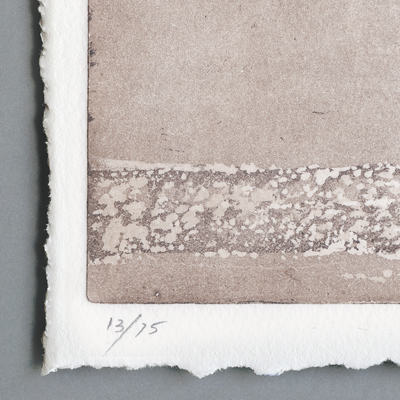
Conservation framing is simply using the best materials and practices to conserve the look and value of an artwork. Paper, card and wood naturally contain acids that over time can cause discoloration, fading and fragility. Knowledge about how materials degrade over time is a fairly modern thing, with acid free paper for artists only becoming commonplace in the early 20th century (this is why many old artworks suffer badly from discoloration and yellowing).
All of the processes we use are fully reversible, meaning no damage will occur the effect the value of the artwork. We use Fine Art Trade Guild conservation standard acid free mountboard and specialist pH neutral tape to secure the work. This tape can be easily removed without damaging the paper.
We only use mountboard that meets the Fine Art Trade Guild conservation standards.
- Trim, cut or fold the edges of the picture, unless asked to. Doing so can effect the value of works on paper.
- Flatten the picture by sticking it to a backing board (dry mounting) unless asked to do so – although dry mounting can be sometimes necessary with thin papers like posters, the best way of conserve the value and quality of paper works is to hold it between a window mount and backing mount.
- Mark on write on the work.
- Use unsuitable tape to hold the paper in the mount- most tapes, such as masking and sellotape, contain acid that can damage an artwork. We only use specialist acid free tape that can be easily removed in future if the picture is removed from the mount.
- Store work between sheets of acid free tissue, away from heat and sunlight.
- Avoid storing work rolled up in tubes – paper has a memory, and storing it like this can make it difficult to flatten.
- Watercolours, drawing and original prints are susceptible to fading, so avoid hanging them in direct sunlight. Oils and acrylics are more suitable for places that receive a lot of sunlight, and most modern reproduction prints use lightfast inks. If you plan to hang a picture in a brightly lit place, consider having it framed with UV protective glass.
- Avoid hanging pictures on damp walls. Framing cannot protect paper works from moisture, which can cause warping and discoloration.
Moulding
Spacers
If a work on paper is being framed without a mount, we use spacers, which are thin pieces of wood or plastic that fit into the rebate of the frame. These create a gap between the glass and the image, preventing any moisture on the glass coming into contact with the paper.
Double Mount
V-Groove
Float
Slip
Museum Level Framing

